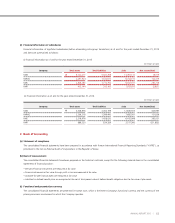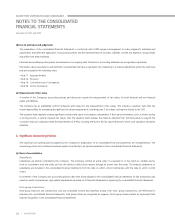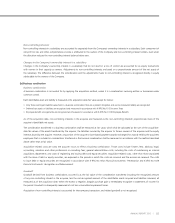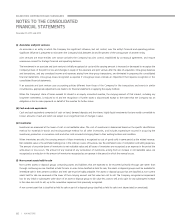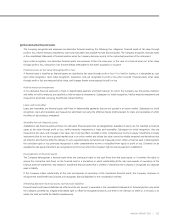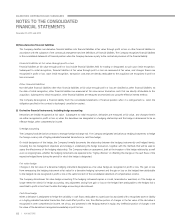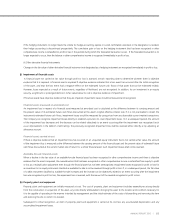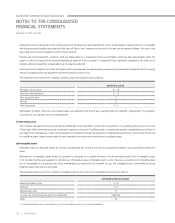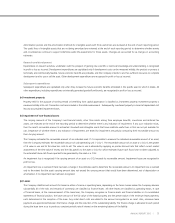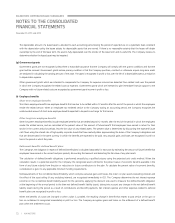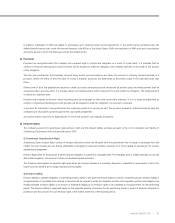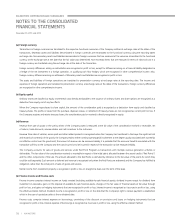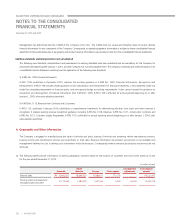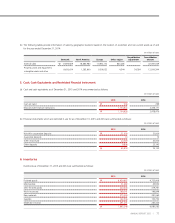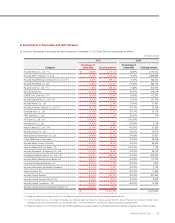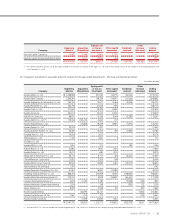Kia 2015 Annual Report Download - page 77
Download and view the complete annual report
Please find page 77 of the 2015 Kia annual report below. You can navigate through the pages in the report by either clicking on the pages listed below, or by using the keyword search tool below to find specific information within the annual report.
Amortization periods and the amortization methods for intangible assets with finite useful lives are reviewed at the end of each reporting period.
The useful lives of intangible assets that are not being amortized are reviewed at the end of each reporting period to determine whether events
and circumstances continue to support indefinite useful life assessments for those assets. Changes are accounted for as changes in accounting
estimates.
Research and development
Expenditures on research activities, undertaken with the prospect of gaining new scientific or technical knowledge and understanding, is recognized
in profit or loss as incurred. Development expenditures are capitalized only if development costs can be measured reliably, the product or process is
technically and commercially feasible, future economic benefits are probable, and the Company intends to and has sufficient resources to complete
development and to use or sell the asset. Other development expenditures are recognized in profit or loss as incurred.
Subsequent expenditures
Subsequent expenditures are capitalized only when they increase the future economic benefits embodied in the specific asset to which it relates. All
other expenditures, including expenditures on internally generated goodwill and brands, are recognized in profit or loss as incurred.
(n) Investment property
Property held for the purpose of earning rentals or benefiting from capital appreciation is classified as investment property. Investment property is
measured initially at its cost. Transaction costs are included in the initial measurement. Subsequently, investment property is carried at depreciated cost
less any accumulated impairment losses.
(o) Impairment of non-financial assets
The carrying amounts of the Company’s non-financial assets, other than assets arising from employee benefits, inventories and deferred tax
assets, are reviewed at the end of the reporting period to determine whether there is any indication of impairment. If any such indication exists,
then the asset’s recoverable amount is estimated. Goodwill and intangible assets that have indefinite useful lives or that are not yet available for
use, irrespective of whether there is any indication of impairment, are tested for impairment annually by comparing their recoverable amount to
their carrying amount.
The Company estimates the recoverable amount of an individual asset. If it is impossible to measure the individual recoverable amount of an asset,
then the Company estimates the recoverable amount of cash-generating unit (“CGU”). The recoverable amount of an asset or a CGU is the greater
of its value in use and its fair value less costs to sell. The value in use is estimated by applying an pre-tax discount rate that reflect current market
assessments of the time value of money and the risks specific to the asset or CGU for which estimated future cash flows have not been adjusted, to
the estimated future cash flows expected to be generated by the asset or a CGU.
An impairment loss is recognized if the carrying amount of an asset or a CGU exceeds its recoverable amount. Impairment losses are recognized in
profit or loss.
An impairment loss is reversed if there has been a change in the estimates used to determine the recoverable amount. An impairment loss is reversed
only to the extent that the asset’s carrying amount does not exceed the carrying amount that would have been determined, net of depreciation or
amortization, if no impairment loss had been recognized.
(p) Leases
The Company classifies and accounts for leases as either a finance or operating lease, depending on the terms. Leases where the Company assumes
substantially all of the risks and rewards of ownership are classified as finance leases. All other leases are classified as operating leases. In case
of financial leases, at the commencement of the lease term, the Company recognizes as finance assets and finance liabilities in its consolidated
statements of financial position, the lower amount of the fair value of the leased property and the present value of the minimum lease payments,
each determined at the inception of the lease. Any initial direct costs are added to the amount recognized as an asset. Also, minimum lease
payments are apportioned between the finance charge and the reduction of the outstanding liability. The finance charge is allocated to each period
during the lease term so as to produce a constant periodic rate of interest on the remaining balance of the liability.
71
ANNUAL REPORT 2015 |




